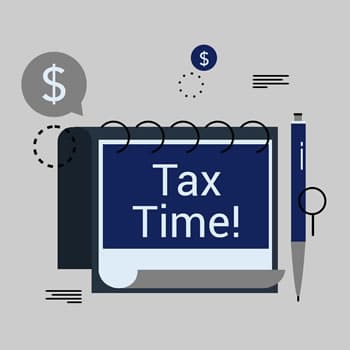IRS E-filing Program History & Timeline
When taxpayers electronically transmit their income tax return it saves the IRS and state taxing agencies time and money. It is also a "green" (environmentally friendly) alternative to printing and mailing.

It costs considerably more to process paper returns into a format that is machine-readable. In fact, due in part to increased e-filing, the IRS budget actually decreased (inflation-adjusted figures) between 2010-2015. From extremely few taxpayers using the system in 1986 to becoming today's norm, the history of e-filing demonstrates that the trend towards electronic transmission continues to grow.
- 1986 - Five tax preparers in three cities—Cincinnati, Raleigh-Durham, and Phoenix—participated in a pilot program. Those preparers filed 25,000 returns. The IRS assigned one employee to switch the phone line to a modem every time there was an e-filing.
- 1987 - The program expanded to 66 tax preparers in seven cities, filing 78,000 tax returns. The program also added an electronic-fund deposit that year.
- 1988 - Taxpayers e-filed close to five times the number of the previous year, or 583,000 returns. During that time, the IRS moved to an IBM Series I processing system, a 16-bit minicomputer, eliminating the need for an employee to plug the phone into a modem.
- 1989 - The e-filing program expanded to 36 states, resulting in over 1 million e-filed returns.
- 1990 - IRS e-filing went national, netting 4.2 million e-filed returns.
- 1998 - Due to the explosive growth of e-filing, Congress mandated that the IRS reach an 80 percent e-file rate for "all federal tax and information returns."
- 1999 - The IRS started to accept electronic payments via credit cards or direct debit. The IRS also launched a pilot program that allowed taxpayers to electronically sign returns instead of mailing a signature form.
- 2002 - The IRS created the taxpayer Personal Identification Number filing, or PIN, that allowed all taxpayers to electronically sign their return. The result was an entirely paperless tax-filing process.
- 2003 - The IRS launched Free File, which allows taxpayers comfortable with their tax returns to use electronic forms free of charge.
- 2005 - The e-filing system crossed the 50 percent threshold, with 68.4 million returns filed. 2005 also marked the end of Telefile, or tax filing by phone.
- 2009 - In an attempt to increase e-filing rates, Congress approved legislation requiring tax professionals who prepare 10 or more individual returns to file electronically.
- 2011 - E-filing crossed the 100 million return mark, which equaled 3 out of every 4 returns being e-filed.
E-filing has grown by leaps and bounds since its inception in 1986. It has also saved money and streamlined the process for filing tax returns. Filing with E-file.com can save you money and help get you a tax refund faster than with mail.
